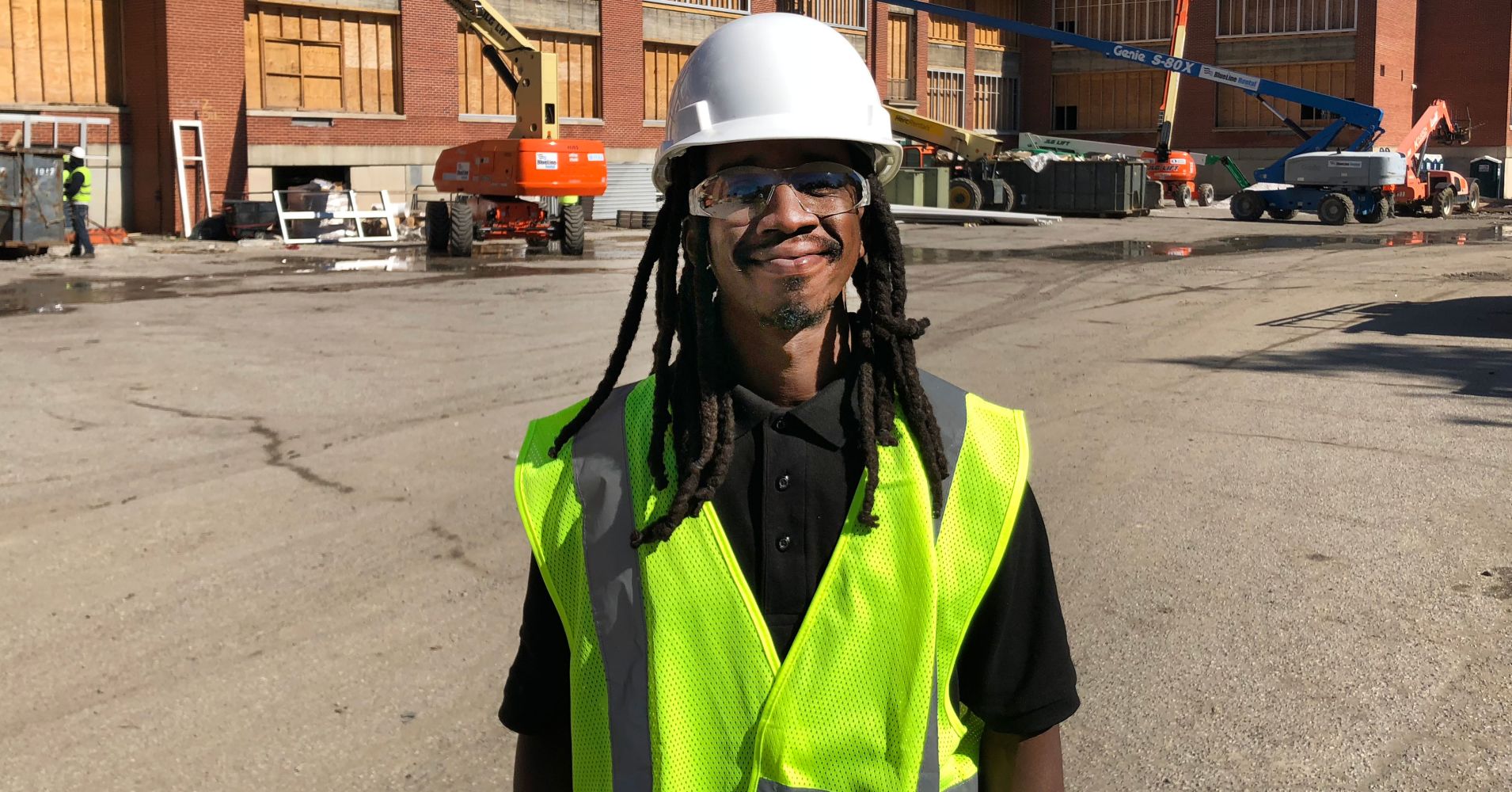
Larry Lopez, president of construction staffing service Green JobWorks in Baltimore, Maryland, needs about 20 skilled workers — a tall order for any small employer in a tight labor market. But even available workers often lack the experience he needs, Lopez says.
“A lot of clients are asking for people who can operate tools like chipping hammers and saws. And the folks that are unemployed and coming into the industry, they find themselves without a lot of experience,” Lopez said. “It’s difficult because they don’t have the skills necessary to perform for our customers.”
To combat the competitive market, Lopez offers benefits including health care, paid time off and annual raises. At Green JobWorks, workers are employees, not contractors.
“Having employees really feel like they are permanent here and that there are opportunities attracts them. I think having some kind of ownership and belonging to the company, because we are doing our own projects, is a benefit I don’t think any other staffing company is doing,” he said.
Offering higher pay, better benefits and on-the-job training — and reaching out to groups of people who don’t fit the traditional mold of a construction worker — are just a few of the ways construction companies are dealing with an acute labor shortage.
Indeed, the strong U.S. economy is affecting the construction industry in two ways: The boom is boosting spending from consumers and businesses who have more cash on hand for expansions and improvements, but it’s also exacerbating the industry’s growing inability to fill jobs.
“We are projected to have about $1.3 trillion in construction spend this year,” says Mike Bellaman, president and CEO of the trade group Associated Builders and Contractors. Over a year, the construction industry has added 330,000 jobs. But Bellaman says it’s just getting started. “We still project that we have another 400,000 to 500,000 jobs ready to be filled. And if we continue to grow at modest rates and if we get an infrastructure package — say $100 billion a year over 10 years — we could add another 700,000 jobs.”
Like other blue-collar industries facing worker shortages, the construction industry is grappling with an aging workforce, and a gender and skilled-labor gap. Bellaman says the industry is recruiting younger students, veterans and people who were previously incarcerated. It’s also trying to change the dialogue with students about the desire for four-year college degrees, which aren’t for everyone.
“If you come into our industry, the beautiful thing is we will teach you the trade that you want to learn, and we will pay you while you do that. When you graduate from a competency-based or time-based apprenticeship program, you can make a great living,” Bellaman said, adding that certain trades such as welding can pay six figures in some regions.
Jobs for those who do obtain four-year degrees are also available, with pay ranging from $50,000 to $70,000 on average industry-wide. Bellaman said it’s not uncommon for workers to have multiple offers, and even have packages that include paying off student loans.
Another untapped resource is women.
“I think it’s a huge secret that we are trying to get out to that community to let them know that women can really thrive in our industry,” Bellaman said.
One apprenticeship program working to feed much-needed talent into the industry is Project Jumpstart, a training program that prepares Baltimore residents for work in construction. It’s a 90-hour course designed to get workers ready for the realities of the construction job site. Classes are held twice a week and students receive a $25 stipend for each class. If they are late, however, they lose the stipend, and on the third absence they are out of the program, according to placement director Kate McShane.
“We are trying to model the construction job site, so we look for attendance, punctuality, following directions, and not being on your cellphone,” McShane said. “So the idea is that you have to show us on six hours a week what you would show an employer in 40.”
McShane says 75 percent of participants have some acquaintance with the criminal justice system. Others, like Eugene Jowers, are simply Baltimore residents looking for a new career opportunity. He’s been working in the field for some two years and is eyeing a long career ahead in the industry.
“The work has been consistent — I haven’t had to look for work since I graduated the program,” Jowers, 30, said. “Going through Project Jumpstart made it easier to provide for my family. And I like running the sites; I think I want to be a superintendent.”
WATCH:Forget 9-to-5. Four hour workdays are the future, says Jack Ma

